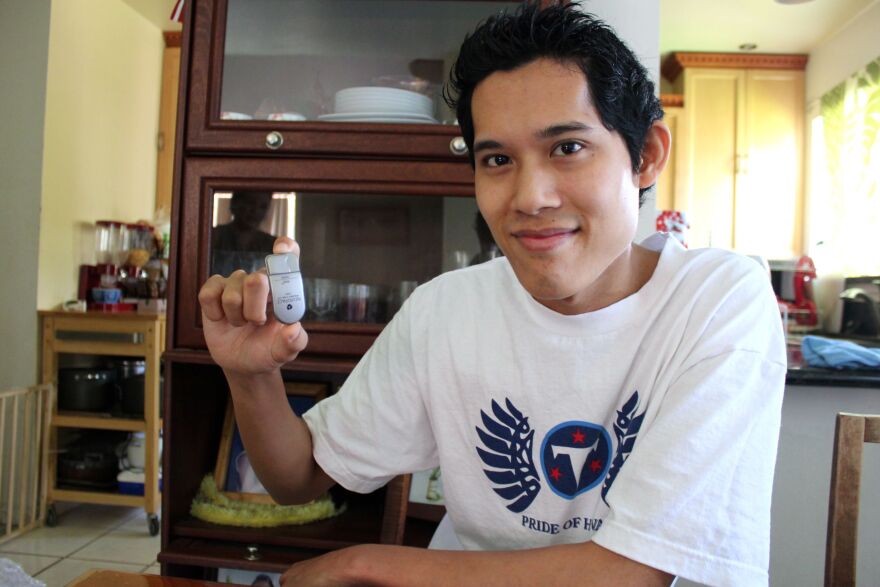15,000 people in Hawai‘i currently live with epilepsy. The condition causes recurrent seizures inside the brain, but a new technology is giving hope to patients. HPR’s Molly Solomon reports.
Jesse Cabillon doesn’t remember exactly when the seizures began. That’s because he was six weeks old when his parents first started to notice unusual behavior. "My parents said I would turn to my side and my eyes would roll back," said Jesse, now 30 year-old.
Jesse was soon diagnosed with epilepsy and has been crippled by chronic seizures most of his life. As he's gotten older, they've gotten much worse, sometimes occurring up to 30 times in one day. "You know when you're on a roller coaster and the drop, it's sort of like you can't control it? That's what I feel like," said Jesse, describing the feeling if a seizure were to occur right now. "At the bottom of that drop, I feel a numbness, specifically for me on the left side of my body. It's sort of uncontrollable, you can't really control your body."
Jesse's seizures got to a point where going to school or holding a job were out of the question. Like roughly 30 percent of people with epilepsy, medications failed to help. And brain surgery was ruled out as too risky. "In Jesse's case, there is one area where the seizures come from. But unfortunately it is in a part of the brain that we say is too high price real estate," said Alan Stein, epilepsy program director at Queens Medical Center who’s also Jesse’s doctor. "If we were to remove that part, Jesse would essentially become fairly paralyzed on the left side of his body."

Stein says that made Jesse a perfect candidate for a new technology called the RNS stimulator, made by the California company Neuropace. He underwent surgery to have it implanted in his brain in April, making him the third patient in Hawai‘i so far. The device is about the size of a thumb drive. Wires connect to the area of the brain where the patient's seizures start. When it detects abnormal activity, it sends an electrical burst of stimulation, eliminating the seizure before it begins. "Right now, cutting edge is the idea of a responsive system," said Stein. "Where it can tell you're having a seizure and it tries to intervene."
Back at home, Jesse continues to monitor his brain activity on a daily basis. He takes out a laptop connected to a small wand. He holds the wand over a spot on the right side of his head, where it communicates with the neurostimulator device. That data gets transferred automatically to a server where Dr. Stein can look over the results. More than half of patients in a NeuroPace trial saw more than a 50 percent reduction in seizures. The results for Jesse have also been positive. He says his seizures are now mostly suppressed. He’s down to just a handful a day, and sometimes none at all.
"You're not as depressed for one thing. Even the people around you see it," said Jesse. "You have a better outlook on things." And a better future ahead. Jessie says maybe now he can help with his father’s construction business. Before the surgery, that wasn’t even a thought. But now he thinks things are looking up.





